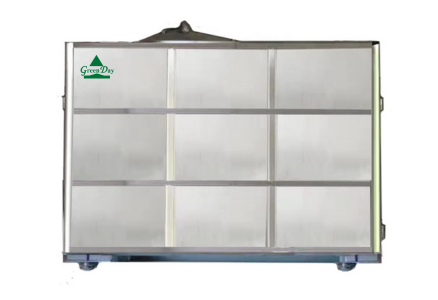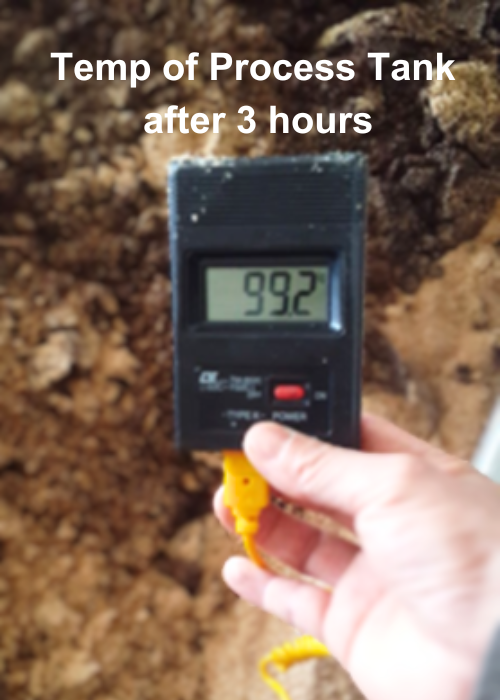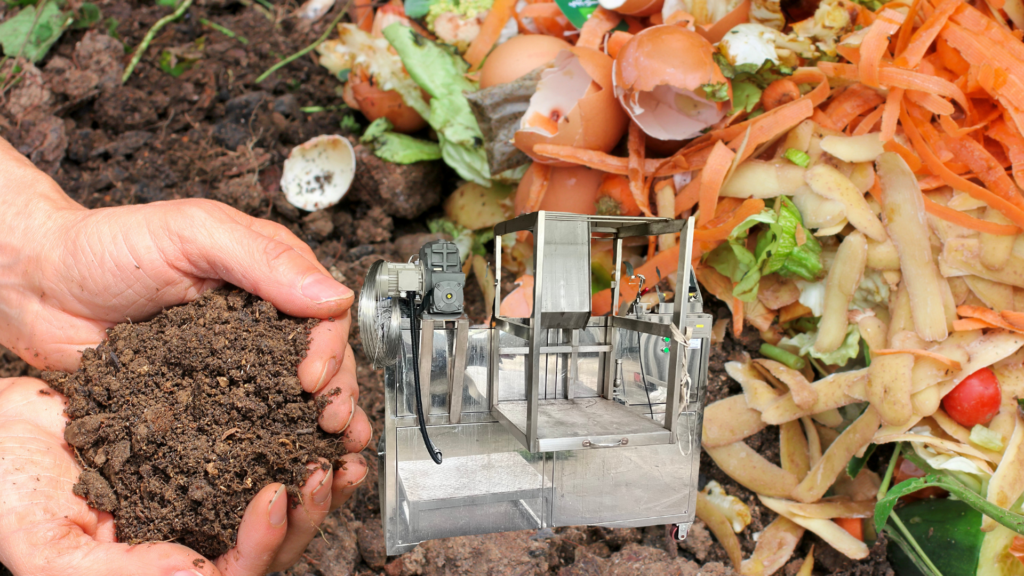About the WDS digester
Description
The WDS Digester is a state-of-the-art, fully enclosed system designed to convert food waste into high-quality bone and meat meal or fertilizer within just 20 hours. By utilizing advanced thermophilic enzyme technology, the WDS Digester efficiently breaks down organic waste through rapid and effective fermentation. Depending on the drying materials used, the resulting output can be effectively used in aquaculture farming (rice husks, coconut husk) or as organic fertilizer (saw dust).

How it Works
WDS digester uses the principles of “mechanical crushing + biological fermentation + high-temperature sterilization” to address the challenges of processing food waste.
High-Temperature Sterilization: The processing tank operates at 120°C to 160°C, raising material temperature to nearly 100°C in 3 hours, effectively eliminating pathogens. Similar equipment on the market typically operates at around 120°C, with material temperatures controlled at about 80°C. Our superior processing temperatures enhance the reproduction of high-temperature-resistant Greenzyme EMB-100 Plus, speeding up organic matter decomposition, and drying the treated products for easier storage or reuse.
Mechanical Processing: Rotating blades cut and crush the food waste, increasing surface area and mixing for better fermentation and decomposition, including grinding bones for thorough treatment.
Biological Fermentation: Utilizing the high-temperature-resistant bacteria Greenzyme EMB-100 Plus, combined with water, oxygen, and heat, to rapidly decompose organic waste. Additives like sawdust and bran enhance absorption and fermentation lowering the moisture level of final product.
Traditional Food Waste Treatment Methods
Landfilling:
Food waste is disposed of in landfills, where it decomposes over time.
- Environmental Impact: Decomposition in landfills produces methane, a potent greenhouse gas contributing to climate change.
- Space Consumption: Landfills require large areas of land, which is increasingly scarce.
- Leachate Production: Liquids from decomposing food waste can contaminate groundwater if not properly managed.
- Odor and Pest Issues: Landfills can produce unpleasant odors and attract pests such as rodents and insects.
Incineration Method:
Food waste is burned at high temperatures, reducing its volume and potentially generating energy.
- Air Pollution: Incineration can release harmful pollutants, including dioxins, heavy metals, and particulate matter, into the atmosphere.
- Energy Inefficiency: Food waste has a high moisture content, making it less efficient as a fuel source.
- Resource Loss: Incineration destroys potentially valuable nutrients and organic matter that could be reused or composted.
Vermicomposting Method:
Worms are used to break down organic waste, producing nutrient-rich castings (worm compost).
- Scale Limitations: Vermicomposting is typically a small-scale operation and may not be suitable for large volumes of waste.
- Sensitivity: The worms are sensitive to temperature, moisture, and the type of food waste provided, requiring careful management.
- Time-Consuming: The process can take a long time to produce usable compost, limiting the amount of waste that can be processed.
Rendering Method:
Animal by-products and some food wastes are processed at high temperatures to separate fats and proteins, which are then used in products like animal feed or biofuels.
- Energy-Intensive: The rendering process consumes significant amounts of energy.
- Odor Issues: The process can produce strong, unpleasant odors if not properly managed.
- Limited Scope: Rendering is mainly suitable for specific types of food waste, particularly animal by-products, and not for general food waste.

Conditions for Eradicating Food Waste Epidemic Pathogens
| Pathogen | Elimination Temp (°C) | Time (M) | Pathogen | Eliminating Temp (°C) | Time (M) |
|---|---|---|---|---|---|
| African Swine Fever | 60°C | 30 | Avian Influenza | 56°C | 30 |
| Foot and Mouth Disease | 56°C | 30 | Brucella | 80°C | 30 |
| Classical Swine Fever | 80°C | 2 | Mycobacterium Tuberculosis | 60°C | 30 |
| Blue Ear Disease | 56°C | 6-20 | Haemophilus Parasuis | 60°C | 5-20 |
| Porcine Circovirus | 72°C | 15-30 | Streptococcus | 60°C | 15 |
| Porcine Parvovirus | 80°C | 5 | Escherichia Coli | 65°C | 30 |
| Rabies | 56°C | 30 | Salmonella | 60°C | 15 |

| Model | WDS-200 | WDS-700 | WDS-1500 | WDS-2500 | WDS-3500 | WDS-8000 |
|---|---|---|---|---|---|---|
| Daily Capacity | 120kg | 600kg | 1300kg | 1800kg | 3000kg | 5000kg |
| Dimension | 1.5m x .9m x 1m | 2.5m x 1.2m x 1.6m | 3.5m x 1.8m x 1.8m | 4m x 1.8m x 1.8m | 5m x 2.2m x 2.1m | 5.7m x 2.3m x 2.25m |
| Operating Voltage | 220V/380V/440V | |||||
| Temp Control Range | 110C-150C | |||||
| Total Power | 13 kw | 25 kw | 30 kw | 36 kw | 50 kw | 60 kw |
| Single Batch Time | 10-20 hours (End Product Moisture Rate Below 40%) | |||||
| Motor Horse power | 2HP | 7.5HP | 10HP | 15HP | 10HP x 2 | 10HP x 2 or 15HP x 2 |
| Total Weight | 450kg | 1500kg | 3100kg | 3600kg | 5600kg | 7200kg |
